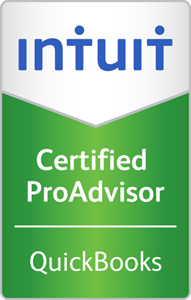Even the most reliably stable and profitable businesses can be brought down by poor cash flow management. A healthy cash flow is essential to the short-term and long-term success of a business, so we’re going to help you learn how to manage your cash flow well and keep your company thriving.
Understanding Cash Flow
Cash flow describes the flow of money in and out of your business. Every time you receive money is an inflow, whether through a sale or a loan or anything else, and every time you spend money is an outflow, like paying wages, buying inventory, etc.
Measuring profit gives you a summary of this sort of activity over a period of time. Your profit for the month is your overall income minus expenses. Cash flow, however, as opposed to profit, is focused on the everyday inflows and outflows of the business and the exact timing of all of these many smaller transactions.
A business can be making plenty of profit, but have poor cash flow. Managing your cash flow means controlling these flows in order to be sure you have proper amounts of cash on hand whenever you need it. If you spend all your cash on new inventory, but then it’s time to pay your employees and you haven’t sold the inventory yet so you don’t have the money for wages, that’s a cash flow problem. In a way you still have the money you need, but it’s invested in the new inventory, so you no longer have the liquidity required for those outflows.
Taking a Closer Look at Your Business’ Cash Flow
The most important task for any company trying to improve or maintain their healthy cash flow is to spend time analyzing the inflows and outflows of your business. Figure out all the ways cash comes in and out of your business and then study the timing and how they line up. What you’re trying to do is identify your potential cash flow gaps. When are inflows not matched immediately by outflows, and where is there room to close those gaps to some degree?
There are a lot of different factors to be aware of in trying to study and optimize your cash flow. One frequent source of cash flow trouble is the gap between a sale and the full payment. Those payments you’re waiting for are called accounts receivable. Extending generous credit and payment plan options can be appealing to customers, but it also means delaying the positive cash inflow from that sale.
Then there’s your inventory strategy. Stocking up when prices are low can be smart, but the more surplus inventory you have sitting around the less cash you’ll have on hand for other important expenses. Your credit and payment schedule with your supplier is another variable that can complicate your cash flows. Those payments you have to be prepared to cover are called accounts payable.
Some cash flow gaps are inevitable, especially with small seasonal businesses, for example. Businesses that fluctuate a lot during the year, rather than being more-or-less consistent throughout the year, will necessarily have to manage some gaps. Often these businesses find themselves short on cash during the slow season.
This can mean having to explore credit and loan options to stay on top of expenses. Then the overall health of your business will depend on being able to make up for the cost of all those outflows and pay off your loans when you get to your peak business season. Working in a seasonal small business means you always have to be thinking long-term with your cash flow.
Guidelines for Better Cash Flow Management
Find ways to encourage customers to finish their payments sooner. Sending reminders or moving payments online if you haven’t already can be helpful. If you don’t want to pressure customers, try offering discounts or other rewards for paying off their purchase in a shorter period than normal.
As you study your cash flow, keep watching out for ways to increase your efficiency and cut costs. If you decrease unnecessary expenses you’ll have more cash on hand for the outflows that will really move your business forward.
Try to keep a reserve of cash outside of the normal flow for emergencies. This can be useful in case of any unexpected immediate outflows you require. This way, you’re prepared for any crises that might arise, but also for any unexpected opportunities for growth and investment you find.
Keep checking your cash flow! Discrepancies in your cash flow can alert you early to deeper problems in your business as well. With regular cash flow analysis and careful management you can stay on top of changing conditions, close your cash flow gaps and catch problems before they cause real trouble.








